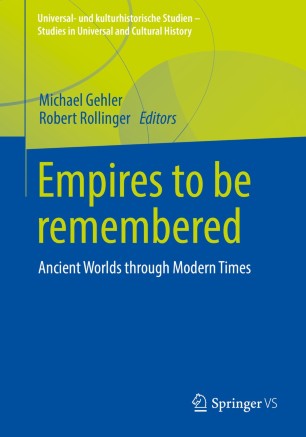Oellig, Marie. 2023. Die Sukzession von Weltreichen: Zu den antiken Wurzeln einer geschichtsmächtigen Idee (Oriens et Occidens 38). Stuttgart: Franz Steiner Verlag.

Aufstieg und Niedergang großer Reiche haben die Menschen über Jahrtausende hinweg beschäftigt und fasziniert. So wurden im antiken Mesopotamien bereits um 2000 v. Chr. Vorstellungen von Weltherrschaft entwickelt und Reflexionen über die Entstehung und den Verfall von Macht angestellt. Als besonders wirkmächtig erwies sich ein Konzept, das seit dem fünften Jahrhundert v. Chr. in der griechischen Historiographie greifbar wird: die Sukzession der ‘Weltreiche’ Assyrien, Medien und Persien. Dieses Modell wurde in der Folge durch das makedonische Alexanderreich sowie das Imperium Romanum erweitert und fand schließlich Eingang in das Alte Testament. Über das Buch Daniel, das das Ende des vierten Weltreiches – später als das römische gedeutet – mit der Apokalypse in Verbindung bringt, wirkte die Sukzessionstheorie maßgeblich auf das Geschichtsdenken des Mittelalters (Translatio Imperii) ein und blieb bis in die frühe Neuzeit hinein ein zentrales Prinzip historischer Periodisierung.
Marie Oellig untersucht die Entstehung und die Genese des Konzepts im Altertum auf breiter Quellengrundlage und kann mithilfe eines interdisziplinären Ansatzes elementare Verbindungslinien zwischen ‘orientalischen’ und ‘griechischen’ Vorstellungswelten aufzeigen.






 Benjamin, Craig. 2018.
Benjamin, Craig. 2018.